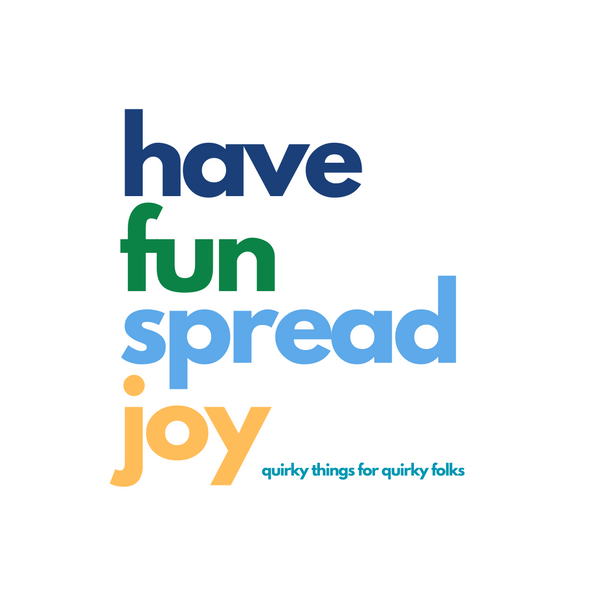Camp, Glitter, Pride: 9 Retro Queer Icons Who Inspire Our Aesthetic
Share
At Have Fun Spread Joy, we believe bold is beautiful — and nothing embodies that like the vibrant, rule-breaking energy of retro queer icons. From disco gods to drag queens, underground artists to operatic fashion rebels, these 9 legends inspire our aesthetic of joy, resistance, and camp.
They didn’t just express themselves through fashion and flair — they redefined what queer identity could look like in public. Whether through sequins, satire, protest, or pop, these figures continue to shape our work and inspire every sticker, t-shirt, and statement we create.
Divine (1945–1988)

“I’m so beautiful, I make myself sick.” — The Face, 1983
John Waters’ muse and the unchallenged queen of filth, Divine (Harris Glenn Milstead) embodied exaggerated femininity as resistance. Her painted-on eyebrows, towering wigs, and “too much is not enough” philosophy transformed camp into cultural canon. Divine didn’t want to be pretty — she wanted to be unforgettable.
Elton John (1947– )

“I wasn’t a sex symbol like Bowie. I was a madman in rhinestones and platform shoes.” — Me: Elton John, 2019
Elton redefined glam in the 1970s, pairing piano ballads with boas, sequins, and feathered jumpsuits. Whether in heart-shaped glasses or a Dodgers uniform made of crystals, he taught the world that flamboyance could be fierce and fabulous.
Grace Jones (1948– )

“Style is not something applied. It is something that permeates.” — I’ll Never Write My Memoirs, 2015
Part disco goddess, part androgynous alien, Grace Jones fused high fashion with punk performance art. Her angular silhouettes and commanding stage presence reshaped gender and power in the public imagination.
Sylvester (1947–1988)

“I am Sylvester, and I am proud to be a gay man.” — Billboard Music Awards, 1979
The disco legend brought unapologetic queerness to dance floors everywhere, shimmering in sequins while singing about love and liberation. His falsetto broke records and boundaries, and his joy remains contagious.
Leigh Bowery (1961–1994)

“I spent a fortune on these clothes. I might as well wear them.” — The Observer, 1994
Bowery turned fashion into performance and his body into a canvas. His grotesque-meets-glamorous creations, from lip-zip masks to balloon bodysuits, shocked and delighted. He blurred the line between art and self.
Marsha P. Johnson (1945–1992)

“I may be crazy, but that don’t make me wrong.” — Pay It No Mind documentary, 1992
A towering figure of queer liberation, Marsha brought flowers, joy, and fierce defiance to every protest. Her signature flower crowns and layered thrifted looks made her a vision of beauty in resistance.
Sylvia Rivera (1951–2002)

“We have to be visible. We should not be ashamed of who we are.” — NYC Pride Rally, 1973
Fierce, fast-talking, and fed up with respectability politics, Sylvia co-founded the Street Transvestite Action Revolutionaries (STAR). Her working-class femme looks — red lipstick, bold prints, big hair — were as defiant as her voice.
Freddie Mercury (1946–1991)

“I dress to kill, but tastefully.” — Melody Maker, 1974
Queen’s frontman radiated charisma and camp. From sequined harlequin jumpsuits to regal capes and crowns, his fashion was as operatic as his voice — dramatic, powerful, and impossible to ignore.
Quentin Crisp (1908–1999)

“Fashion is what you adopt when you don’t know who you are. Style is what you do when you do.” — The Naked Civil Servant, 1968
Living flamboyantly gay in 1930s London, Crisp was a powder-faced dandy who turned his life into performance. His sharp wit, violet hair rinse, and unapologetic visibility made him a style icon before there was even a word for it.
Why These Icons Still Matter
These icons didn’t just influence fashion — they transformed culture. They used style as a sword, glitter as armor, and camp as a form of political rebellion. At Have Fun Spread Joy, their legacy lives on in every sequin, sticker, and statement we make.
Pride is about visibility, yes — but also audacity, imagination, and joy. These icons gave us all permission to take up space, wear our truth, and decorate the revolution.
Ready to Wear the Legacy?
These icons didn’t just break rules — they rewrote them in glitter. Keep the spirit alive with our most joyfully defiant designs.
- Explore the Camp Classics — over-the-top, tongue-in-cheek, and always fabulous.
- Shop the Pride Collection — a riot of color, celebration, and queer power.
- Visit the Proudly Woke Collection — protest-ready, purpose-driven, and proud as hell.
Have Fun. Spread Joy. Be loud. Be visible.
